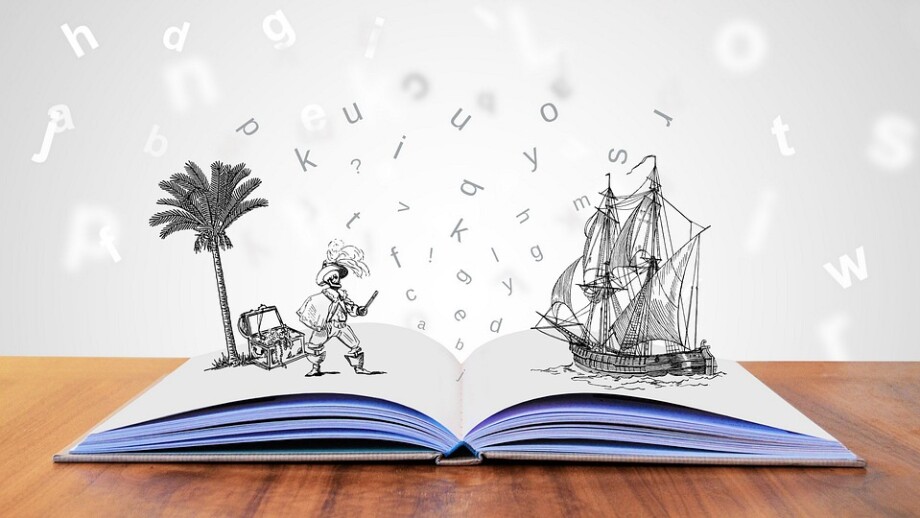Storytelling is a powerful tool to use in an English classroom. Stories are natural for every human language. They are engaging and excellent for developing fluency in the four skills. Stories can be used for recycling the known language or introducing new grammar and vocabulary. What’s more, a good story inevitably leads to lots of possible ways of exploiting language.
This article will deal with some main principles of storytelling with teenagers.
Teenagers are mistakenly thought to be too old for stories. However, a compelling story told by a teacher or created by students themselves can bring a lot of benefits to the lesson. Stories do wonders with shy teens because it’s much easier for them to talk and write on behalf of some character. Tales evoke powerful emotional responses and can help teens work through some stressful experience. After all, stories are just good fun which also has its place in a classroom full of teens.
How to find a story?
There are two main ways of working with stories: students responding to stories or students making stories. With lower levels, you are most likely to be a storyteller yourself, and first, you need to do is find a good story. What you can opt for is:
- personal stories
Share with teens some of your personal stories. As these are close to you, you will be sincere and emotional enough to engage your listeners.
- urban legends
Urban legends are strange stories which are passed from person to person by word of mouth and usually has little basis in truth. All of us experienced telling one or two, being kids and sitting around the campsite fire. They never get old and might be a real gem for Christmas or Halloween classes.
- classic tales
It’s hard to surprise a teen with the story of Snow White or Harry Potter. However, this kind of stories provides a great opportunity for students to create spin-offs and write fan fiction.
- tales from around the world
Stories from around the world are a great way of travelling without leaving the classroom. They can be easily incorporated into any lesson on culture, traditions, geography and what not. What’s more, a number of them have been voiced or read by talented storytellers, so teens might get access not only to the story but to a variety of accents and speaking manners. You can find some world tales here or here.
Here I can’t but share a favourite African story of mine told by Jan Blake, who is currently one of Europe’s leading female storytellers. We love this story with higher level students while talking about household chores, gender equality and things like that.
- short stories
A variety of short stories is abundant on the Internet, just ask Google. From six-word stories to much longer variations, they might arouse teens’ curiosity and facilitate language learning.
How to make sure the story suits you?
Before bringing the story you’ve found to the class, look through the questions below:
Is the story likely to engage your teens?
Does it suit their age, is it generally appropriate for the classroom?
Is the level good for your teens? Won’t they be overwhelmed with all those unfamiliar structures and words?
Does it fit the current topic you are studying?
Are you going to tell it just for pleasure or for the sake of learning?
Do you personally enjoy this story? How will you feel while telling it?
Sometimes you might love the story, but it fails to turn into a successful and memorable lesson. This little questionnaire will help you spot a perfect one for your students.
How to deliver your story?
Nobody is born a storyteller. Language teachers, however, usually have all the skills to be one. A bit of rehearsing before the lesson — and you are ready to go. Read the story several times, one of them out loud. Give voice to the story, rehearse intonations, add emphasis to key parts. Try to learn the opening and closing of the story. Repeated dialogue is also important to learn by heart. Also, think of the moments when you’d like your teens to react to what you are telling them. Plan pauses and questions. Prepare music or pictures if you feel like using some. A storyteller is always an actor, so, in the end, your teens will enjoy a little show.
How to teach with the story?
When you are choosing a story, you need to plan your ‘before’, ‘while’ and ‘after’. The range of activities depends on the level of students and your aim.
‘Before’ activities can include teaching potentially unknown language, predicting the main events by the title or illustrations, or setting tasks to complete.
‘While’ tasks are spotting deliberately made mistakes, analysing characters’ behaviour or filling the gaps for both content and grammar.
What can go ‘after’ is continuing the story, interviewing the characters, answering questions on the content, retelling the story and so on.
The next article on storytelling is coming soon. It will address practical activities we can do in a more detailed way. It will also tell about the ways to make students create stories and perform as storytellers themselves.
Stay tuned!






 Вероника Аветисян
Вероника Аветисян 
 Маргарита Аветисян
Маргарита Аветисян 


